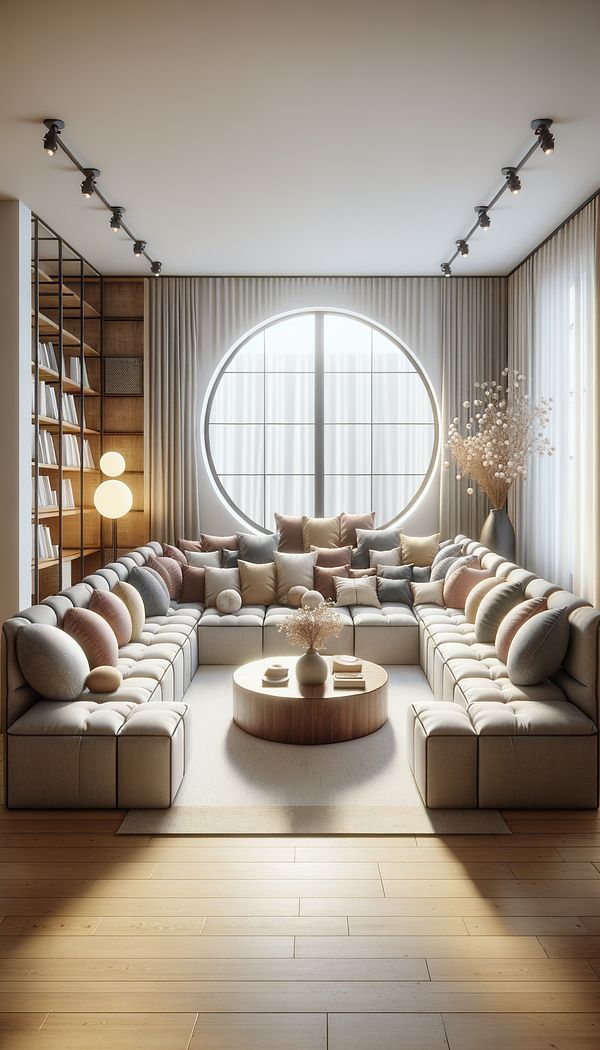What is Modular Seating?
Modular seating is a flexible furniture solution composed of multiple independent pieces that can be arranged and rearranged to suit different spaces and needs.
Description
Modular seating, an increasingly popular choice in both residential and commercial interiors, offers unparalleled flexibility and functionality. This style of furniture consists of various independent units or modules, which can include sofas, loveseats, chairs, ottomans, and corner pieces. These modules can be moved, reoriented, and combined in endless configurations, allowing users to tailor their seating arrangements to the specific requirements of any given space or event.
The appeal of modular seating lies not only in its adaptability but also in its ability to grow and change with you. As needs evolve - whether due to family expansion, moving to a new home, or simply a desire for a change in layout - modular systems can be easily added to or reconfigured, making them a long-term investment. This contrasts sharply with traditional, fixed sofas or seating arrangements, which offer little to no flexibility once installed.
Modular seating designs range from the minimalist and contemporary to the plush and luxurious, accommodating a wide variety of interior design styles. Materials and finishes are equally diverse, offering choices that include various textiles and upholstery, leathers, and more sustainable options. This versatility ensures that modular seating can integrate seamlessly into any aesthetic, from sleek, urban living spaces to cozy, informal family rooms.
Usage
Modular seating is commonly seen in living rooms, lounges, offices, waiting areas, and event spaces. Its ability to adapt makes it ideal for open-plan homes or multifunctional spaces, where it can serve both as everyday furniture and as seating for guests during larger gatherings.
FAQs
-
Can modular seating be used in small spaces?
Absolutely! Modular seating can be particularly beneficial in small spaces where flexibility and efficient use of space are paramount. Individual modules can be used to create the perfect size seating arrangement without overpowering the room.
-
How do you maintain and clean modular seating?
Maintenance depends on the materials used. Most modules come with removable textiles and upholstery covers that can be machine washed or dry cleaned. For leather units, regular wiping with a damp cloth and occasional treatment with leather conditioner is recommended.
-
Can modular seating be used outdoors?
Yes, some modular seating designs are specifically made for outdoor use, crafted from weather-resistant materials and fabrics. These are ideal for patios, decks, or pool areas.
-
Is modular seating more expensive than traditional seating options?
Initially, modular seating can be more of an investment due to its versatility and the potential for customization. However, its adaptability and longevity can make it more cost-effective in the long run.
-
How do you choose the right modular seating for your space?
Consider your space's size, your interior design styles, and your functional needs. Think about how you plan to use the room and the flexibility you require. It's also important to evaluate the quality of the materials and construction to ensure durability.
Practical Application
When planning to incorporate modular seating into your space, start by measuring your room and thinking about the potential layouts you might want to create. Consider not just your current needs but also how they might evolve. Look for options that offer both the aesthetic and functional qualities you need, and don't be afraid to invest in quality modules that will offer better longevity and adaptability over time.
-
Furniture Types599 articles
-
Space Planning & Layout134 articles
-
Textiles & Upholstery252 articles
-
Claw & BallClaw & Ball is a decorative motif featuring a claw, paw, or talon grasping a ball, typically used in furniture legs.
-
CassoneA large wooden chest, often richly decorated, used historically in Italy for storage and as a dowry trunk.
-
Art NouveauArt Nouveau is an international style of art, architecture, and applied art, especially the decorative arts, that was most popular between 1890 and 1910.
-
Greek StyleGreek Style refers to the design and decoration principles originating from ancient Greece.
-
Café CurtainA café curtain is a half-window curtain that offers privacy while letting in light.
